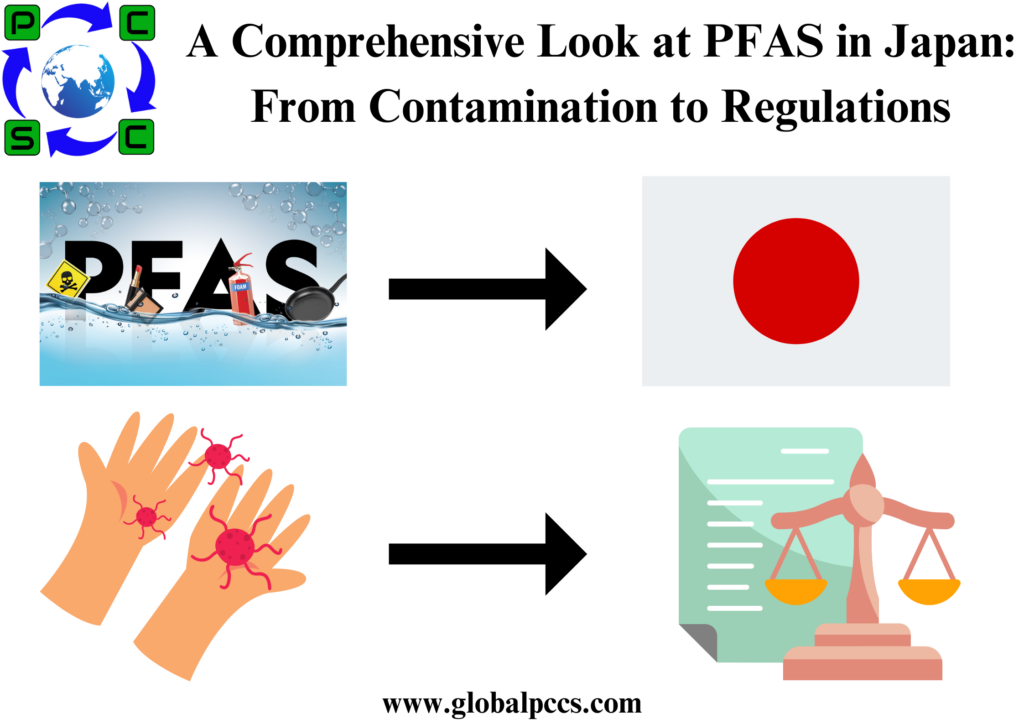 The levels of PFAS found in Japanese tap water are more than 60 times higher than the EU standard and 28 times higher than the government’s interim maximum limit.
The levels of PFAS found in Japanese tap water are more than 60 times higher than the EU standard and 28 times higher than the government’s interim maximum limit.
Since some commonly used PFASs were classified as Class I Specified Chemical Substances in Japan, it is theoretically forbidden to manufacture or import any items.
In contrast to Western nations, Japan does not currently have any particular food or cosmetic laws or policies.
For more than 10 years, the Persistent Organic Pollutants (POPs) known as PFAS have drawn a lot of attention from both European and American governments. This group contains thousands of compounds that are easily accumulated in the environment and have a difficult time decomposing, like PFOA, PFOS, PFNA, PFHxS, and PFBA. Despite having relatively lax laws for PFAS, Japan continues to investigate the health dangers associated with them. In the future, more specific regulatory requirements are anticipated.
This article looks at the present limits on these compounds in Japan and begins with PFAS pollution in that country.
PFAS Contamination: Concerns Raised Over PFAS Detection
- Standards for PFAS in Tap Water
On April 1, 2020, Japan Ministry of Health, Labor and Welfare (MHLW) designated “PFOS and PFOA” as items for water quality management goals and set a provisional target value of “50ng/L for the combined value of PFOS and PFOA.” These values are based on the assumption that a person weighing 50 kg consumes 2L of water without any negative health effects every day in their entire life .
- Serious PFAS Contamination
According to the survey results for the 2022 fiscal year released by the Ministry of the Environment (MOE) in March 2024, PFAS concentrations above the national standard were detected at 111 out of 1,258 sampled locations in rivers and groundwater in 38 prefectures. The 111 non-compliant samples are distributed in 16 prefectures such as Osaka and Okinawa.
Additionally, Japan Broadcasting Corporation (NHK) reported that in October 2023, PFAS was found to exceed the national standard in some areas of Japan. For example, authorities detected that PFAS concentrations were 28 times higher than the Japanese government’s provisional upper limit (50ng/L) in the tap water of Okayama Prefecture, and more than 60 times higher than the limit (0.63ng/L) set by the European Food Safety Authority (EFSA) in 2020.
As concerns about PFAS detection continue to rise, the government has requested that local governments and water supply companies provide the results of previous water quality tests by the end of September 2024, in order to understand the current situation of PFAS detection in tap water across the country.
- Risks to Human Health
PFAS’s impact on human health includes reported increases in cholesterol levels and carcinogenic effects, but the scientific understanding of PFAS is still lacking on an international level.
In Japan, MOE has released the Question and Answer Collection on PFOS and PFOA, which states that Japan has no confirmed cases of individual health problems caused by the ingestion of PFOS and PFOA .In addition, MOE is making efforts to gather information on toxicity and monitor the detection of PFAS.
Current Supervision
PFAS is widely used in non-stick coatings, waterproof clothing materials, cosmetics, skincare products, and food packaging due to its waterproof, oil-resistant, and heat-resistant characteristics. But compared to other countries, Japan is very loose on PFAS supervision.
- Chemicals
Japan mainly regulates the most widely used PFASs through designating them as Class 1 Specified Chemical Substances under the Chemical Substances Control Law (CSCL). Once a PFAS substance is designated as Class I Specified Chemical Substances, its manufacture, import and use would be prohibited in principle. In addition, the import of designated products containing these designated PFASs substances would also be prohibited. Details are as follows:
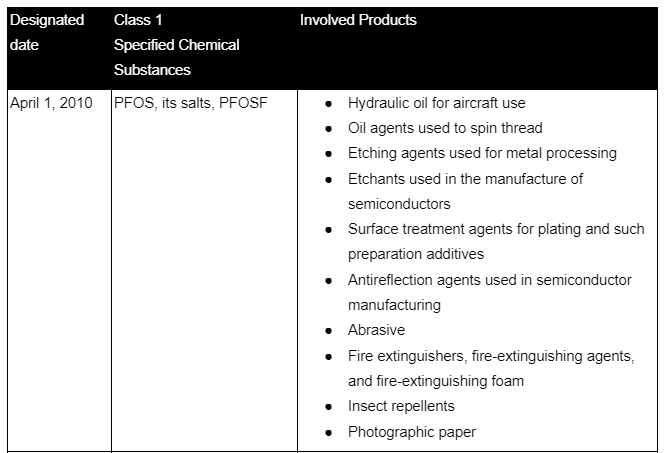
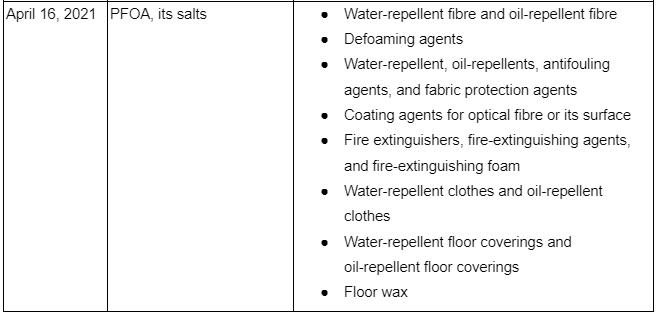
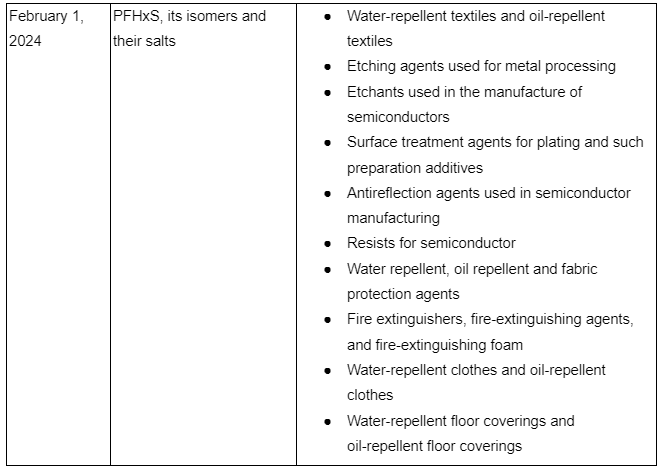

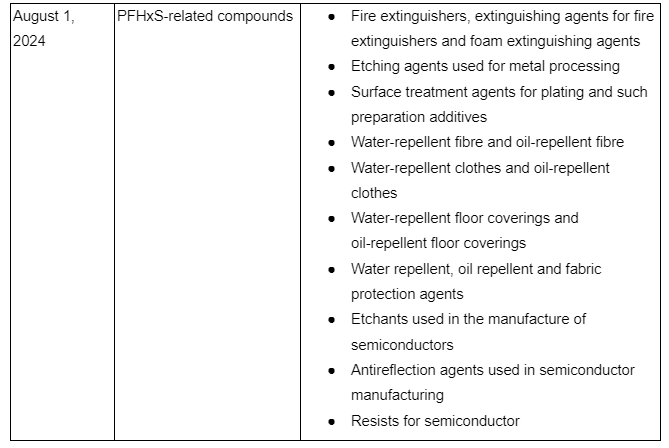








 Authorised IMDS & CDX Training & Consulting partner for
Authorised IMDS & CDX Training & Consulting partner for






